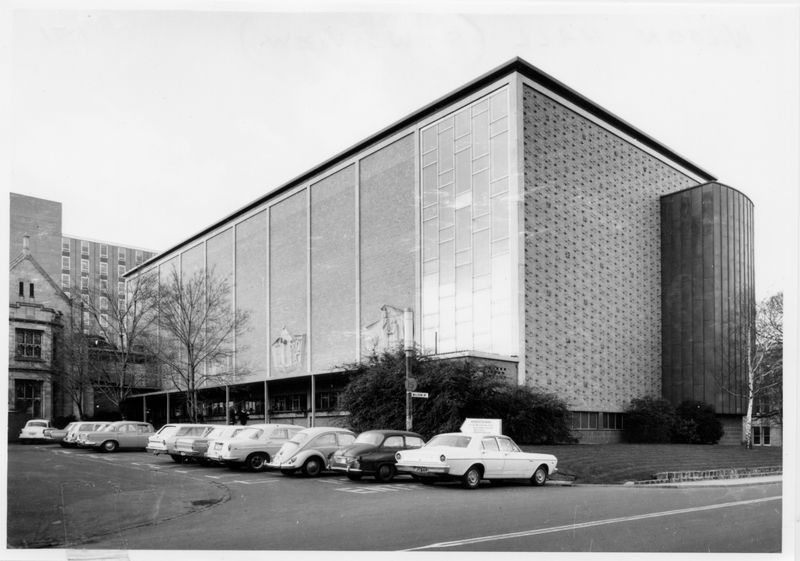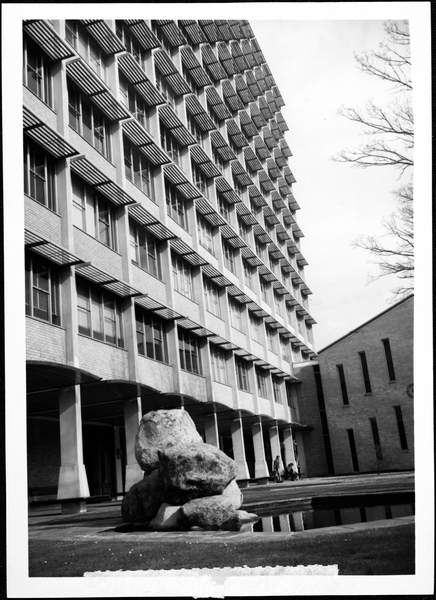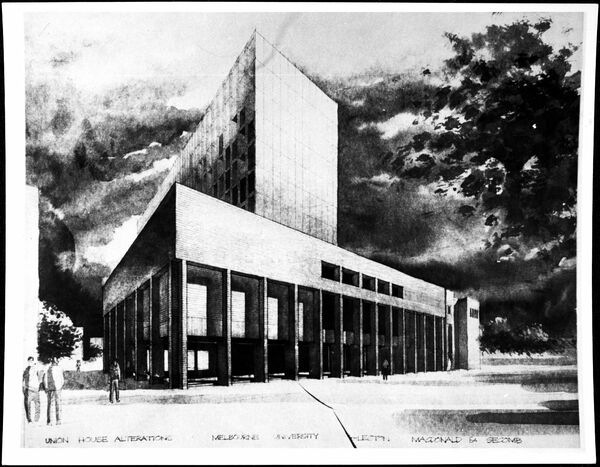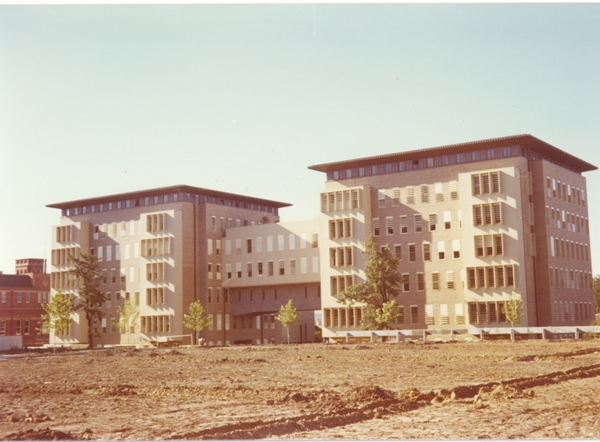Modernist
Modernism started making appearance in the campus developement during the 1920- 1945 time period, when there was an increased influence of the Public Works Department (PWD). It was after the appointment of Percy Everett as the Chief Architect of the PWD in 1934, that modernist elements became visible in the style of the buildings. In his designs, Percy Everett used modern materials and technology showing his adherence to the style.
The first evident commitment to the style was witnessed in the 1938 Union House extension proposal by Philip Hudson. The design showcased the use of modern material such as brick and also responded to the Gothic Revival National Museum architecture. After 1952, the involvement of the PWD diminished dramatically. It was the new Wilson Hall in 1956, which marked the official introduction of Modern Architecture to the campus. After this, Modernism dominated the whole campus with some of the well known Modernist firms, including Bates Smart, Roy Grounds, and Eggleston, MacDonald & Secomb making an appreance in the development of the University.
Learn more about Modernist Style
Australia Modern : architecture, landscape & design / Hannah Lewi & Philip Goad
Australian architecture : a history / Davina Jackson
Australian architecture, 1901-51 : sources of modernism / Donald Leslie Johnson
Evolutionary modernism : Daryl Jackson 65/05 / foreword by Patrick McCaughey.



